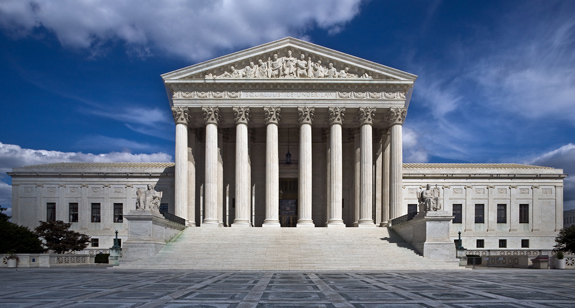Personal Statement Help (from the U.S. Supreme Court)
- by
- Dec 02, 2010
- Admissions, Personal Statements
- Reviewed by: Matt Riley


Personal Statement Help (from the U.S. Supreme Court!)
Law school application season is heating up, and as we head into December, I suspect that the majority of you are working on your personal statements and supplemental essays. For those of you studying for the December LSAT, stop reading now and go study. To the early birds who have already submitted all of their applications, congratulations and best of luck. The rest of us are looking for that perfect way to sum up who we are and what we can offer our prospective law schools. It certainly helps to look at examples of strong personal statements and identify what features make them compelling to admissions officers. It can be equally effective to look at examples of what NOT to do in your personal statement, and if you want to know what kind of writing to avoid, look no further than the United States Supreme Court.
I won’t take it personally if you read that last sentence with some skepticism. After all, one of the pesky prerequisites for becoming a Supreme Court Justice is a mind brilliant enough to reach the pinnacle of the legal profession. The prerequisites for writing a blog are slightly less stringent (internet access and at least one functional hand). Nonetheless, there was this very interesting article in the New York Times that is very critical of the decisions being passed down by the current Roberts court. The article doesn’t aim its criticism at anything political, rather, it says that the decisions themselves are unnecessarily long, they are unclear, and ultimately they don’t provide much guidance. In other words, they violate virtually every rule of writing a good personal statement.
Rule #1: Be Concise.
A typical personal statement is 2-3 pages, double spaced. You’re trying to tell admissions officers who you are, what you stand for, and what you bring to the table in only a few paragraphs. You need to be efficient. It’s a pretty basic writing tip, but it appears that our current Supreme Court Justices need a quick reminder.
We can all agree that Brown v. Board of Education was a pretty important case. That whole “segregated schools are unconstitutional” thing is something we can all get behind. Brown v Board did its job in fewer than 4,000 words. That’s the efficiency of an assassin. Wake up, end segregation, go to lunch. The average length of a Supreme Court decision in the 1950s was 2,000 words. Today, the Roberts court has been known to issue decisions that exceed 50,000 words. The average length of a Supreme Court decision hit its all-time high this year. The worst part? “In decisions on questions great and small, the court often provides only limited or ambiguous guidance to lower courts. And it increasingly does so at enormous length.” Not ideal. Remember, when writing your personal statement, less is more.
Rule #2: Know Your Audience.
You are obviously going to want your personal statement to project a tone and style appropriate for a law school admissions committee. After all, that is your audience and you need to be writing with them in mind.
It would be nice if Supreme Court decisions could be understood by the average, educated person, but apparently our current justices are writing to another audience. Chief Justice Roberts has said that clarity and accessibility are important to him, but there isn’t a whole lot of evidence that he has followed suit. “I hope we haven’t gotten to the point where the Supreme Court’s opinions are so abstruse that the educated layperson can’t pick them up and read them and understand them,” he said. Oh yeah? Check out this NY Times article to read a few quick excerpts from some recent decisions. Your brain will literally ache.
Rule #3: Be Interesting! Grab your Readers Attention!
Critics of the court’s work are not primarily focused on the quality of the justices’ writing, though it is often flabby and flat. I’ll admit that the primary goal of a Supreme Court decision is not to entertain the reader. Read your personal statement aloud. Then read this aloud:
“Prudence councils caution before the facts in the instant case are used to establish far-reaching premises that define the existence, and extent, of privacy expectations enjoyed by employees when using employer-provided communication devices. Rapid changes in the dynamics of communication and information transmission are evident not just in the technology itself but in what society accepts as proper behavior.”
If the two sound similar, you are not grabbing the attention of the admissions board. You also may have been writing a court decision about privacy rights instead of your personal statement, and you should try to figure out how you got so far off-track.
Search the Blog

Free LSAT Practice Account
Sign up for a free Blueprint LSAT account and get access to a free trial of the Self-Paced Course and a free practice LSAT with a detailed score report, mind-blowing analytics, and explanatory videos.
Learn More
Popular Posts
-
logic games Game Over: LSAC Says Farewell to Logic Games
-
General LSAT Advice How to Get a 180 on the LSAT
-
Entertainment Revisiting Elle's LSAT Journey from Legally Blonde








